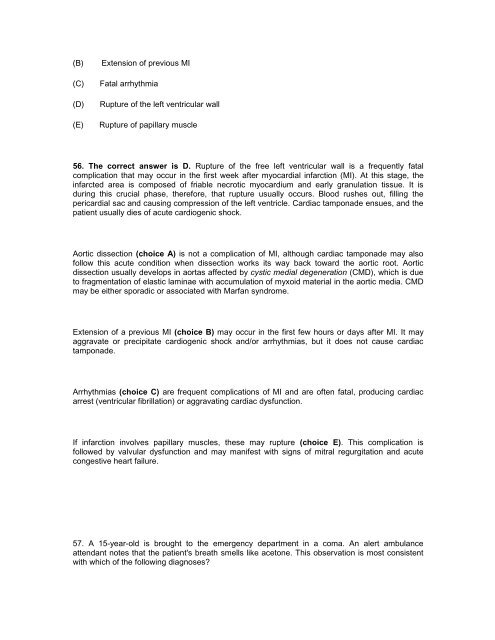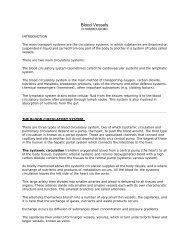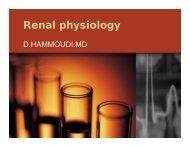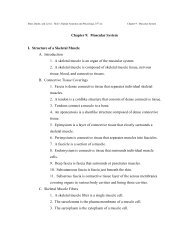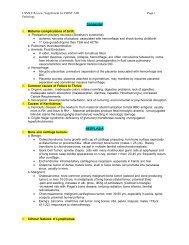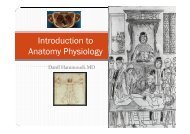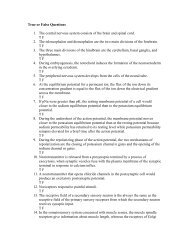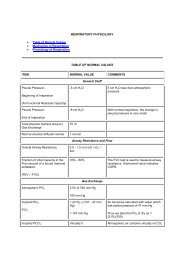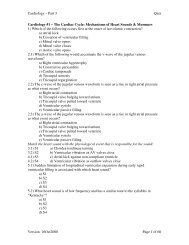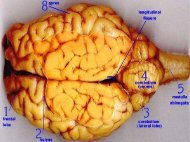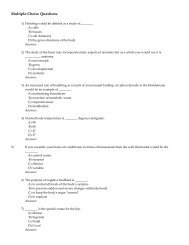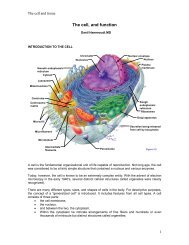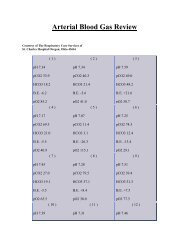L:\usmle review 7 - Sinoe medical homepage.
L:\usmle review 7 - Sinoe medical homepage.
L:\usmle review 7 - Sinoe medical homepage.
You also want an ePaper? Increase the reach of your titles
YUMPU automatically turns print PDFs into web optimized ePapers that Google loves.
(B)<br />
(C)<br />
(D)<br />
(E)<br />
Extension of previous MI<br />
Fatal arrhythmia<br />
Rupture of the left ventricular wall<br />
Rupture of papillary muscle<br />
56. The correct answer is D. Rupture of the free left ventricular wall is a frequently fatal<br />
complication that may occur in the first week after myocardial infarction (MI). At this stage, the<br />
infarcted area is composed of friable necrotic myocardium and early granulation tissue. It is<br />
during this crucial phase, therefore, that rupture usually occurs. Blood rushes out, filling the<br />
pericardial sac and causing compression of the left ventricle. Cardiac tamponade ensues, and the<br />
patient usually dies of acute cardiogenic shock.<br />
Aortic dissection (choice A) is not a complication of MI, although cardiac tamponade may also<br />
follow this acute condition when dissection works its way back toward the aortic root. Aortic<br />
dissection usually develops in aortas affected by cystic medial degeneration (CMD), which is due<br />
to fragmentation of elastic laminae with accumulation of myxoid material in the aortic media. CMD<br />
may be either sporadic or associated with Marfan syndrome.<br />
Extension of a previous MI (choice B) may occur in the first few hours or days after MI. It may<br />
aggravate or precipitate cardiogenic shock and/or arrhythmias, but it does not cause cardiac<br />
tamponade.<br />
Arrhythmias (choice C) are frequent complications of MI and are often fatal, producing cardiac<br />
arrest (ventricular fibrillation) or aggravating cardiac dysfunction.<br />
If infarction involves papillary muscles, these may rupture (choice E). This complication is<br />
followed by valvular dysfunction and may manifest with signs of mitral regurgitation and acute<br />
congestive heart failure.<br />
57. A 15-year-old is brought to the emergency department in a coma. An alert ambulance<br />
attendant notes that the patient's breath smells like acetone. This observation is most consistent<br />
with which of the following diagnoses


